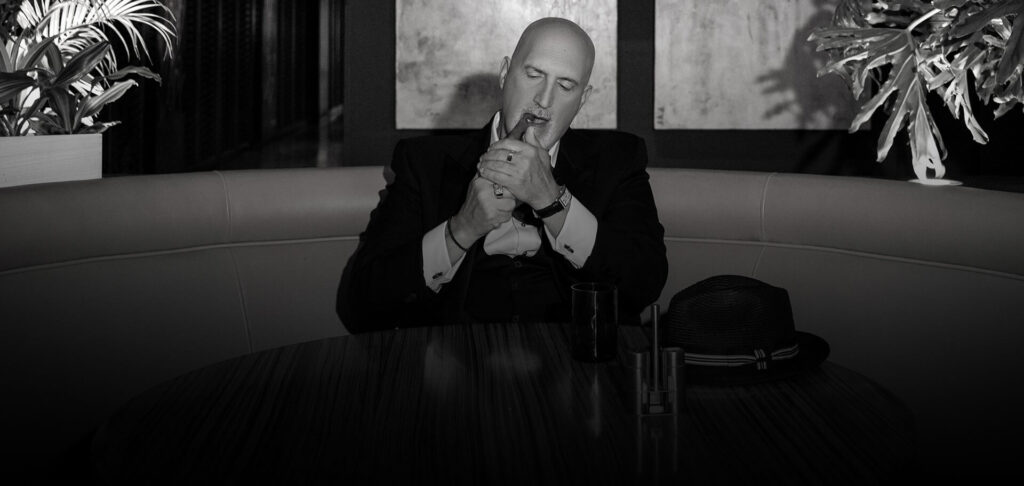“Here’s to the crazy ones, the misfits, the rebels, the troublemakers, the round pegs in square holes.” – Steve Jobs
That’s a nice summation in a neatly wrapped up, memorable quote of “Outlaw Thinking.”
What it isn’t is a good description of what I mean by “Outlaw Thinking.”

Outlaw Thinking is about two things that the interplay between them, disruption and adaptability.
In the world of business a disruptive paradigm upsets and replaces what came before it, usually with the intention or actuality of making a system more effective and efficient, improving performance, and thereby increasing the results achieved within it. Usually in the world of business this translates into more market share and profit.
When we apply this same concept of outlaw thinking to our personal lives the same two functions of disruption and adaptability come together. The distinction within the personal sphere, when you apply outlaw thinking, is that it allows you to see past the cultural norms, impositions and installations that shape so many people’s worldview.
When you can see beyond the cultural norms that are familiar and contain you, new perspectives become available to you, and new opportunities become open for you … in your relationships, in your work, in your health and mental well being.
You become more free to decide and act outside of what is considered “proper” according to the accepted socio-cultural agreements, thereby creating a new, more authentic, and freeing worldview.
When you think and act outside of the “proper” worldview that you had been sharing with others, there are usually repercussions and push back from those who had counted on you to go along.
Yet, almost always those who have realized that installing and operating from an outlaw thinking worldview have come to realize how worth it making the investment and shift had been for them.
The key begins with upgrading your mind so you can elevate your performance, and this will not be the familiar way you probably think about thinking today, nor will it be comfortable initially to let go of that familiarity.
Most people have a worldview that is dramatically shaped by the cultural norms they’ve been exposed to that’s generally one dimensional. This leads to thinking linearly about cause and effect, i.e.: “this happened because that happened,” as though the Universe unfolds in a straight continuous, unbroken line. Philosophers call this deterministic thinking.
I call linear, cause and effect thinking, “First Order Thinking” in the model I’ve been developing, “Cognitive Maturity.” Current research suggests that 80% of the population falls into this first order of thinking.
10% of the population have not fully mastered even First Order Thinking, leaving 10% that operate beyond First Order Thinking. I’ve developed descriptions of two further orders of thinking in the Cognitive Maturity model.
Second Order Thinking takes into account a teleological consideration, where the present is organized in relation to the desired future outcome, independent of and transcending historical limitations.
Third Order Thinking adds the recursive aspect of being able to recognize the effect of the actions you take in the systems you operate in relation to as having the consequence of changing you as well as bringing about outcomes outside of yourself.
Here’s a short list of these three levels of Cognitive Maturity:
- 1st Order Cognitive Maturity: Linear Tactical Cognition
Recognizing That You Are Thinking About Achieving A Specific Outcome And The Specific Action You Plan On Taking To Create The Outcome - 2nd Order Cognitive Maturity: Consequential Strategic Cognition
Thinking About And Recognizing That The Action You Are About To Take Has Consequences And Factoring Them Into Your Decision-Making Process - 3rd Order Cognitive Maturity: Cybernetic Systemic Cognition
Knowing Achieving Your Outcome Happens Within A System That Contains You, And That The Action You Take Will Have An Effect On You As Well As On Whatever Or Whomever Is Also Effected By It In The System
What I’m talking about here is called developmental modeling, and the folks who do this work, developmentalists. I think of myself as a neurocognitive developmentalist in terms of the models I’ve designed and specifically in relation to the body of work I’m engaged in that I’m calling “Cognitive Maturity.”
One of the major developmental researchers suggests ten total levels of potential development that she’s demarcated. Within her model, that she’s been studying and refining for more than twenty years, there are four levels above what she refers to as the “conventional” and what I’m calling First Order Thinking.
The developmental model continues beyond “conventional” to postconventional levels, and I’ve broken these down into Second and Third Order Thinking as I’ve described above. In her model, two of the postconventional levels, 7 & 8, would fit into my Second Order Thinking level, and the last two, 9 & 10, would fit into my Third Order Thinking.
Here’s what she says about the postconventional levels 7 – 10:
“Stage 7, the Individualistic stage, represents the first of several postconventional stages. To grow beyond Conscientious, Stage 6, a person must become more inner-directed and more tolerant of themselves and others. The self-established standards of the previous stage must become more contextualized and flexible. Persons at the Individualistic stage become aware of contradictions, such as the conflict between their need for autonomy and their need for emotional connection. They are willing to live with emotional and cognitive complexities that may not be resolvable, and they become more psychologically minded. The Autonomous Stage, Stage 8, and the subsequent Stage 9, Integrated, describe about 10% of the U.S. adult population. Autonomous individuals are able to accept conflict as part of the human condition. They tolerate contradictions and ambiguities well and demonstrate cognitive sophistication. The Autonomous person respects the autonomy of others and values close personal relationships. Self-fulfillment and self-expression gain increasing importance in this person’s life. High social ideals of justice are also typical of this stage.
— The Postconventional Personality: Assessing, Researching, and Theorizing Higher Development by Angela H. Pfaffenberger, Paul W. Marko, et al.
https://a.co/b1ERrw0
Then the postconventional levels, 9 & 10, are further described in her model as following after what she called Stage 8:
“She emphasized a cognitive shift that takes place at the Autonomous level, Stage 8, describing it as the embracing of systemic and dialectical modes of reasoning. Such individuals can hold multiple viewpoints and are interested in how knowledge is arrived at. In the language of the post-Piagetians such as Richards and Commons (1990) this constitutes a postformal way of reasoning. Individuals are aware of subjectivity in the construction of reality, accepting interpretation as the basis for the creation of meaning. Cook-Greuter constructed two postautonomous stages to replace Loevinger’s final Stage 9, and suggested that about 1% of the population reach this level of development. The ninth stage in her system is called Construct-aware. At this level, individuals become conscious of how language shapes the perception of reality. Language is experienced as a form of cultural conditioning that people usually remain unaware of throughout their lives. According to Cook-Greuter (1999) individuals can subsequently progress to an understanding that their egos are actually constructed from memory and maintained through an ongoing internal dialogue. As their self-awareness increases, they become interested in alternative ways of knowing. Transpersonal episodes, such as peak experiences, become increasingly common and people become drawn to meditation, alternate ways of knowing, and the witnessing of the internal process. At this stage, the individual experiences conflict between ordinary consensual reality and transpersonal awareness. This may be evident in the ego’s ownership and evaluation of transpersonal episodes, or in seeming paradoxes such as attachment to nonattachment. Only at Stage 10, the Unitive stage, can individuals sustain an ongoing openness to experience that is fluid and without struggle. They are now able to make use of transpersonal experiences free from ego clinging. Individuals have been tested who are found to be functioning at the Unitive stage, ranging upward from 26 years of age (S. Cook-Greuter, personal communication, December 3, 2003).”
— The Postconventional Personality: Assessing, Researching, and Theorizing Higher Development by Angela H. Pfaffenberger, Paul W. Marko, et al.
https://a.co/6RcNDGc
From these descriptions, if we follow Cook-Grueter’s developmental modeling, only 1% of the population ever reach levels 9 or 10 as they are detailed here by her, with this being the focus of the work I’m aiming at with my clients:
The ninth stage in her system is called Construct-aware. At this level, individuals become conscious of how language shapes the perception of reality. Language is experienced as a form of cultural conditioning that people usually remain unaware of throughout their lives. According to Cook-Greuter (1999) individuals can subsequently progress to an understanding that their egos are actually constructed from memory and maintained through an ongoing internal dialogue.
And it continues …
As their self-awareness increases, they become interested in alternative ways of knowing. Transpersonal episodes, such as peak experiences, become increasingly common and people become drawn to meditation, alternate ways of knowing, and the witnessing of the internal process. At this stage, the individual experiences conflict between ordinary consensual reality and transpersonal awareness. This may be evident in the ego’s ownership and evaluation of transpersonal episodes, or in seeming paradoxes such as attachment to nonattachment.
The model I began designing almost thirty years ago, the MythoSelf Process was specifically designed to raise the level of awareness of the clients I work with to achieve this 9th level of cognitive maturation. This is virtually unheard of, even by the developmentalists who I’ve studied for the past twenty plus years.
The developmentalists tend to believe and operate from two “certainties” … 1) the levels must be progressed though sequentially, and 2) you cannot therefore jump levels, you must progress sequentially. Everything I’ve done in the past twenty years suggests that it is indeed possible to attain a level 9/Third Order Thinking awareness regardless of the level of cognitive maturity you are operating from today.
That’s now become my mission, to make this kind of advance in cognitive maturity to the higher postconventional levels of awareness, available to as many people as I can, who get the value in making the personal investments required to attain it, and to reap the rewards that accrue when it has been attained.
I’ll be back again with a bit more in Part Three … if you’re ready to take the next steps in exploring how you can make this kind of leap yourself have a look here now:
Mastering Cognitive Maturity
Best,
Joseph Riggio, Ph.D.
Architect & Designer of the MythoSelf Process and SomaSemantics
Developer of A.C.T. | Adaptive Cognitive Training and the Cognitive Maturity Model
P.S.: If you’re interested in working with me in one of my small coaching groups or 1:1, there’s no need to wait any longer, reach out to me directly at: joseph@josephriggio.com, and we’ll come back to you about how to find out more about taking the next steps to do that …



